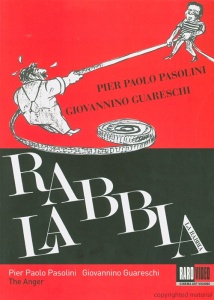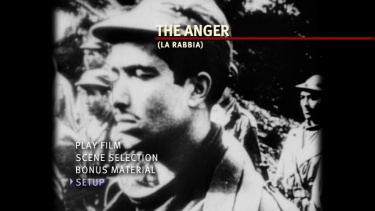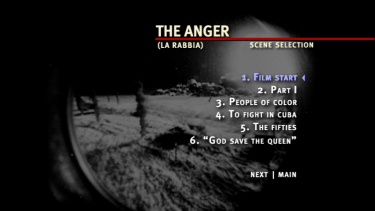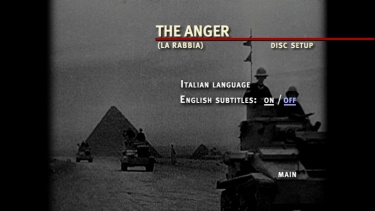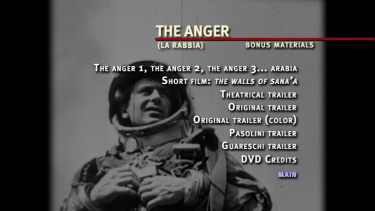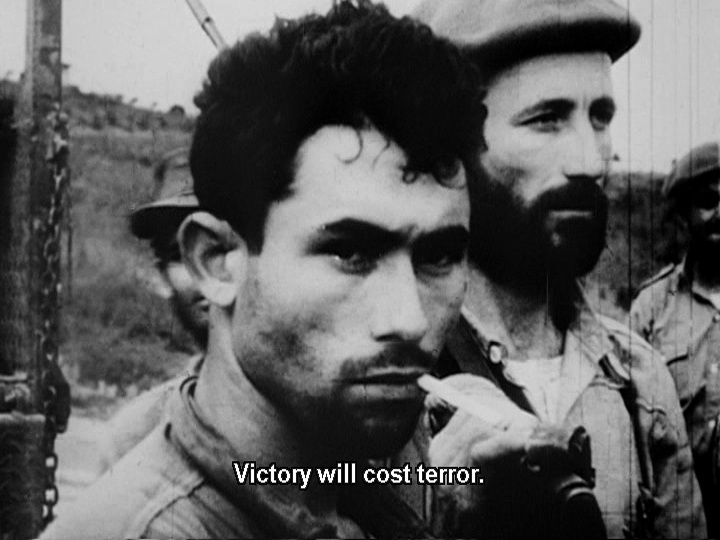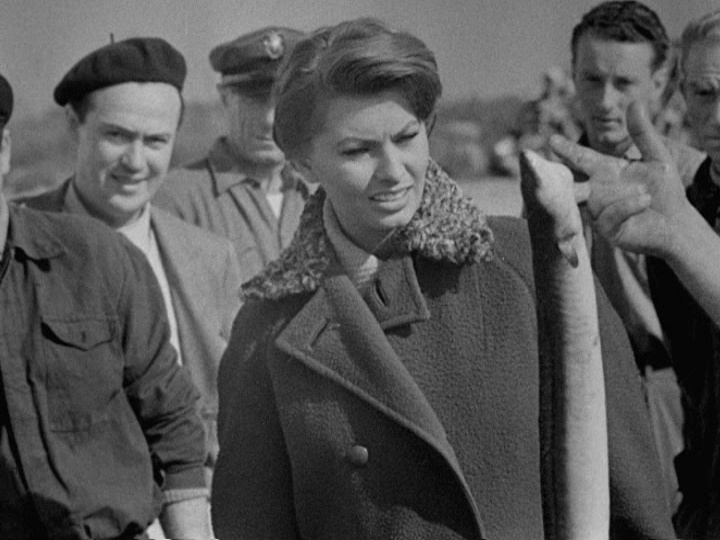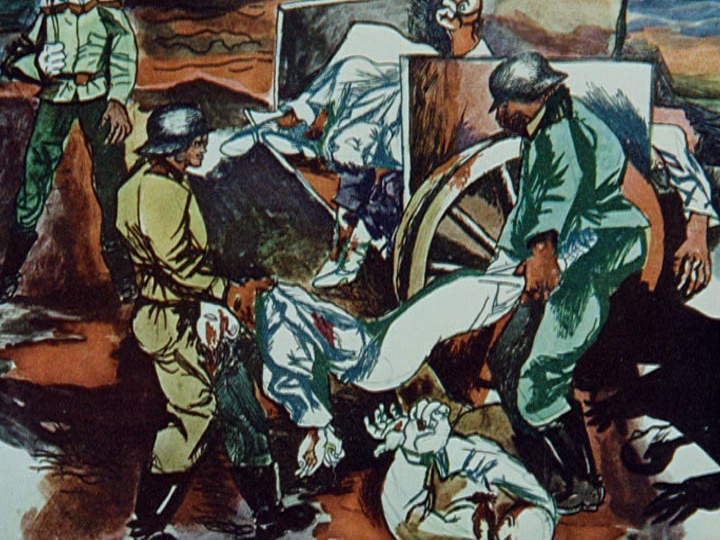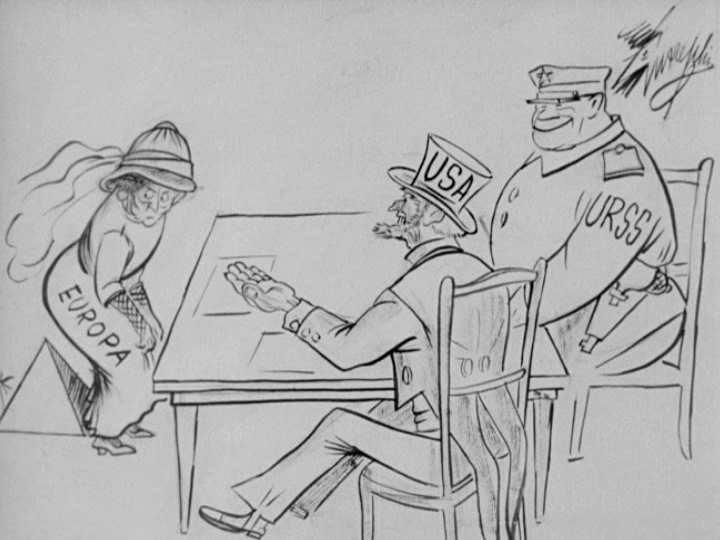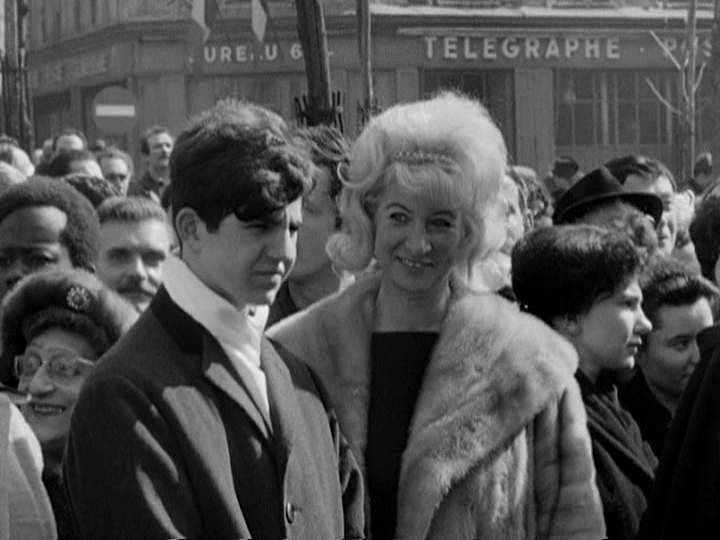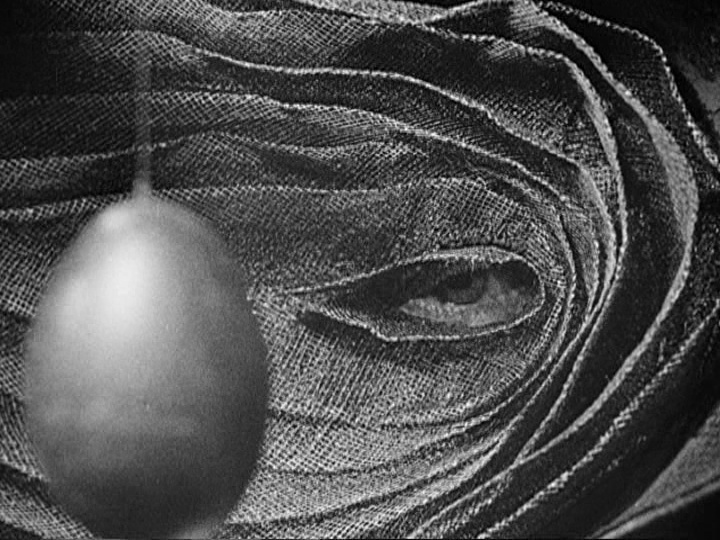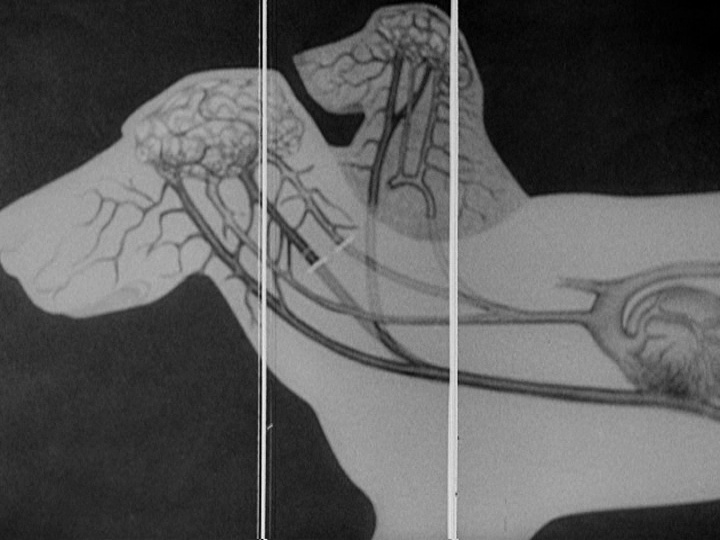![]()
![]()

![]()
![]()
|
Search DVDBeaver |
S E A R C H D V D B e a v e r |
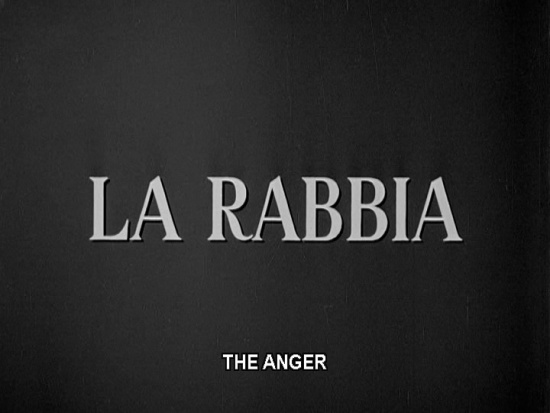
(aka "The Anger" or "The Rage")
directed by Pier Paolo Pasolini
Italy 1963
|
A left-wing filmmaker (SALO's Pier Paolo Pasolini) and a right-wing extremist humorist (Giovannino Guareschi, author of the "Don Camillo" novels) attempt to answer the question: "Why is our life dominated by discontent, by anguish, by fear of war, by war?" Making use entirely of non-original footage from newsreels and short films, the filmmakers both express concerns for encroaching modernity, but from different viewpoints and on different subjects. Pasolini's concern is with those disenfranchised by the "historical irresponsibility" of the bourgeois world while Guareschi pines for Nazis (he refers to the Nuremberg trials as "revenge"), fascists, and the former colonial empires and decries cinema ("Cinema has made Rome, the capital of Christianity, the capital of sex") and "the third sex". That might seem like a lopsided description, but Guareschi some of Guareschi's rhetoric is unambiguously racist. The narration of Pasolini's section is voiced by painter Renato Guttuso (whose paintings are on view in the film) and author Giorgio Bassani (author of the source novel for GARDEN OF THE FINZI CONTINI) while that of Guareschi's part is voiced by Gigi Artuso and actor Carlo Romano (who dubbed one of the characters in the Italian series of "Don Camillo" films). LA RABBIA is less interesting as a film than for the story of its conception, reception, its withdrawal from circulation and disappearance, and its and rediscovery/restoration. Pasolini began the film as an individual work and turned in a 100 minute cut (edited by Mario Serandrei, BLACK SUNDAY), but the producer cut this version - for which the narration had not been recorded - in half and decided to bring in Giovannino Guareschi to shoot a segment as a conservative answer to the same thesis question. Although publicity materials hyped the film as an argument between the two men, Pasolini was in the re-editing phase (with Nino Baragli, THE GOOD, THE BAD, AND THE UGLY) while Guareschi was assembling his version. Additionally, neither man had seen the other's segment, so there was response or rebuttal (Guareschi's son also disputes the notion that the two men violently disliked each other; although they were opposed to each other's view, Pasolini and Guareschi were civil to one another in their rare meetings). The improbable myth that has surrounded the disappearance of the film was that the left-wing forced Pasoini to bury the film because they thought that the film's structure - although it was two separate films, the placement of Guareschi's segment after Pasolini's meant that viewers were liable to forget what came before and take Guareschi's as the definitive answer - "trapped" Pasolini. Contemporary Italian film scholars posit the notion that distributor Warner Bros. might have been responsible for the film's disappearance due to the extreme America-bashing in Guareschi's segment rather than Pasolini's proletariat sentiments. Black and white 16mm prints of both episodes had been screened separately over the years and were not shown together until the 1988 Venice Film Festival (a black and white VHS of both episodes was issued in 1989 in Italy by Panarecord). The Pasolini episode was included in a DVD edition by MK2 in France with the Guareschi episode placed in the supplements. The color negatives were not discovered until 2005 by Raro's parent company Minerva Pictures (who issued it on DVD in 2008). |
Posters
|
|
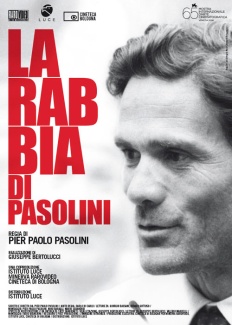 |
Theatrical Release: 13 April 1963 (Italy)
Reviews More Reviews DVD Reviews
DVD Review: Raro Video/eOne - Region 0 - NTSC
Big thanks to Eric Cotenas for the Review!
| DVD Box Cover |
|
CLICK to order from:
|
| Distribution |
Raro Video/eOne Region 0 - NTSC |
|
| Runtime | 1:44:48 | |
| Video |
1.33:1 Original Aspect Ratio |
|
|
NOTE: The Vertical axis represents the bits transferred per second. The Horizontal is the time in minutes. |
||
| Bitrate |
|
|
| Audio | Italian Dolby Digital 2.0 mono | |
| Subtitles | English, none | |
| Features |
Release Information: Studio: Raro Video/eOne Aspect Ratio:
Edition Details: Chapters 24 |
|
| Comments |
Previously released in versions sourced from a rare fully black-and-white print, LA RABBIA is presented on Raro's new DVD in a restored version - from the rediscovered negative - misfiled under L'ARABIA [Arabia] - which features color inserts of paintings by artist Renato Guttuso. The two parts of the film are otherwise composed fully from newsreel footage, so the image quality of the sources is variable, but it appears to be free from any edge enhancement. The progressive, fullscreen image is likely derived from the same master as Raro's Italian edition (which probably features the same extras). The Italian mono audio is composed of narration and music, and is in good condition. Just as the controversies and confusion surrounding the making of the film and its disappearance are more interesting than the film itself, Raro's impressive lineup of extras are also of greater interest and make a more compelling case for the film and what both of its writer/directors were trying to say. Accompanying the feature are a different versions of the trailer that illustrate the way the film was advertised, including versions with statements by Pasolini and Guareschi to one another (these statements are transcribed in the booklet). The Pasolini color short "Le Mura di Sana'a" - shot for UNESCO - is presented in 4:3 letterbox. The title of the seventy-one minute documentary is explained by the existence of four (technically three) different versions of the film: 1) Pasolini's original 100 minute version (only accessible to the public in the form of the published screenplay), 2) the Pasolini vs Guareschi version, 3) the aborted attempt by Ugo Gregoretti to rework the second version, and 4) L'ARABIA (not actually a version, but the possibly intentional mispelling under which the missing color negative was rediscovered). The documentary charts the creation and reworking of these various versions and provides a lot of biographical and anecdotal material on the filmmakers from the production manager of the Pasolini part, Guareschi's son, as well as critics and researchers (particularly the documentary's director Tatti Sanguinetti, who unearthed a wealth of valuable archival material). Also included is an extremely informative and well-researched 21-page booklet that will be helpful in understanding the context of the film's production. There is more than a bit of overlap with the documentary, but the booklet nicely distils the important points. |
DVD Menus
|
|
|
|
|
|
Screen Captures
Subtitle sample
|
|
|
|
|
|
|
|
|
|
|
|
|
|
| DVD Box Cover |
|
CLICK to order from:
|
| Distribution |
Raro Video/eOne Region 0 - NTSC |
|
![]()
![]()

![]()
![]()
 Search DVDBeaver |
S E A R C H D V D B e a v e r |
